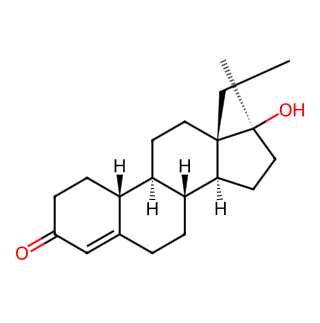- Synthetic anti-infective drugs
- Medications for the digestive system
- Antipyretic and analgesic drugs
- Medications for the blood system
- Medications for the respiratory system
- Anti-allergic drugs
- Medications for the urinary system
- Diagnostic medications
- Immunosuppressive and immunomodulatory drugs
- Vitamins and mineral supplements
- Antioxidants and medications for osteoporosis
- Antiparasitic drugs
- Ophthalmic medications
- Amino acids and their derivatives
- Dermatological medications
- Medications for the circulatory system
- Antitumor drugs
- Medications for the nervous system
- Hormonal and endocrine function-regulating drugs
- Antibiotics
- Others
CAS No.: 797-63-7




Levonorgestrel
Levonorgestrel, a fully synthetic potent progestin, is the optically active isomer of racemic norethindrone, exhibiting twice the activity of norethindrone and approximately 100 times that of norethisterone.
Basic Information
English Name: Levonorgestrel
CAS Number: 797-63-7
Molecular Formula: C21H28O2
Molecular Weight: 312.45
Pharmacological Action
Levonorgestrel primarily acts on the hypothalamus and pituitary gland, inhibiting the secretion of pituitary gonadotropins, resulting in a significant reduction or disappearance of the mid-cycle peaks of FSH and LH, thereby preventing ovulation and achieving contraceptive effects. Additionally, it exhibits pronounced anti-estrogenic activity, thickening cervical mucus to hinder sperm penetration. Its strong progestational activity on the endometrium leads to thinning of the endometrium, low columnar epithelial cells, and poor secretory function, unfavorable for fertilized egg implantation. Furthermore, Levonorgestrel possesses some androgenic activity and protein anabolic effects.
Clinical Applications
Levonorgestrel is primarily used for emergency contraception in women, effectively preventing pregnancy when taken within 72 hours after unprotected sexual intercourse or contraceptive failure. It is available in tablet form (e.g., Yuting, Leting), with the first tablet taken within 72 hours after unprotected sex and the second tablet 12 hours later. Additionally, Levonorgestrel is incorporated into intrauterine devices (IUDs) such as LNG-IUS, where it is released continuously through a sustained-release system for long-term contraception.

Tai Yau Street, San Po Kong, Kowloon, Hong Kong, China.



